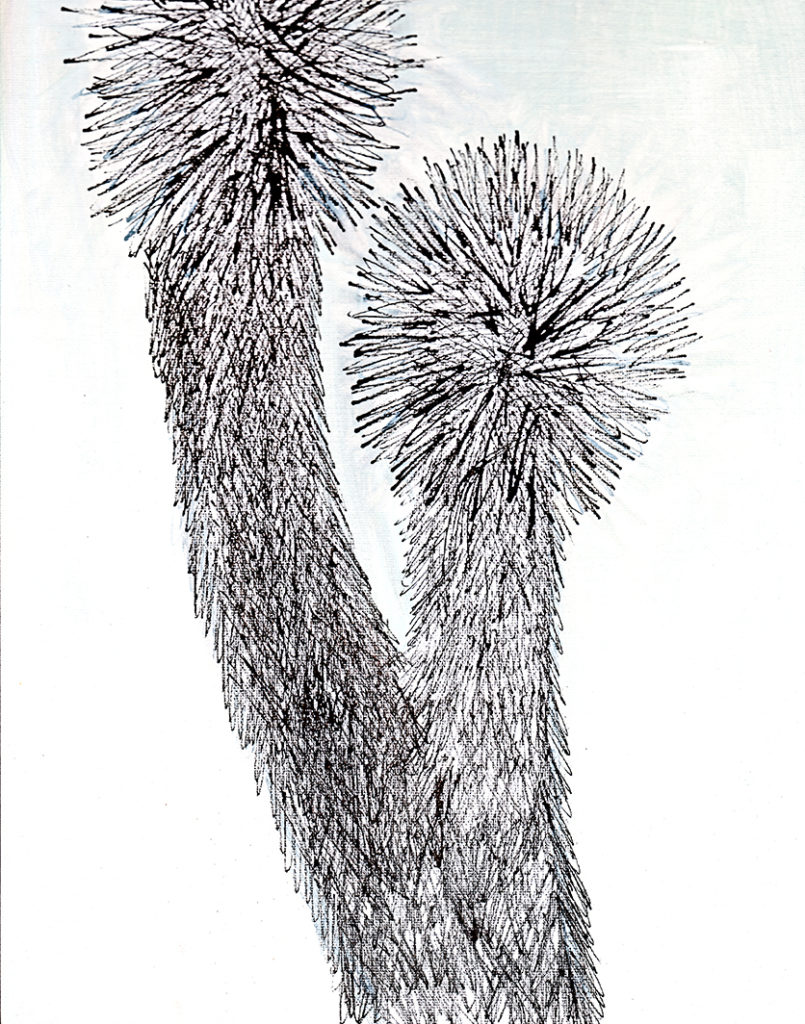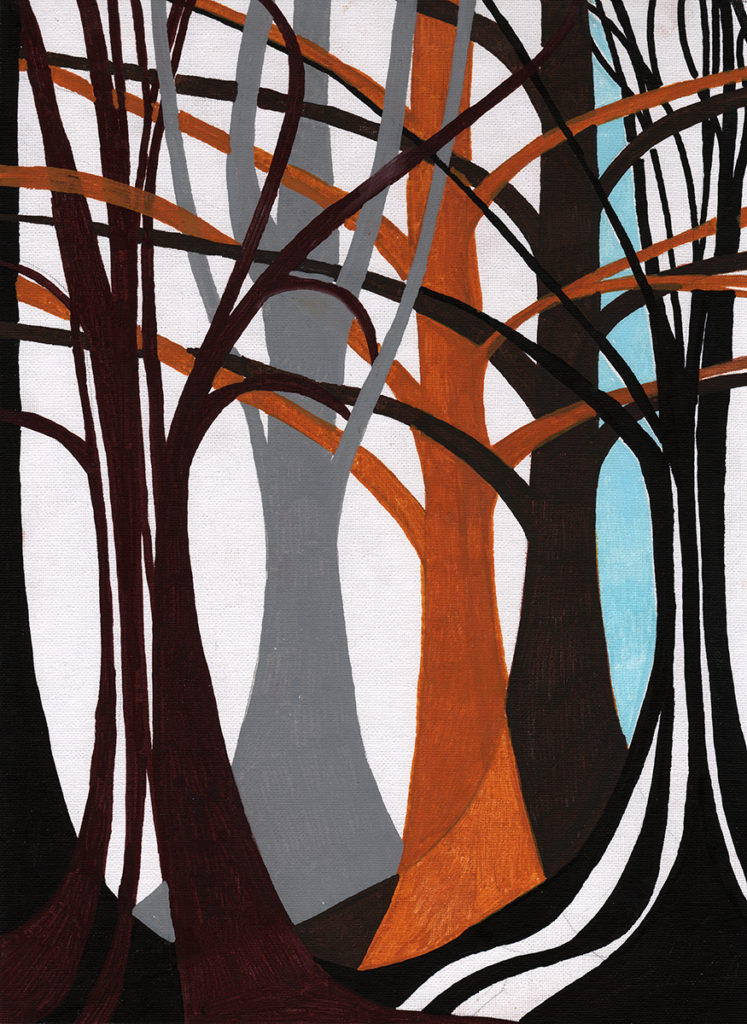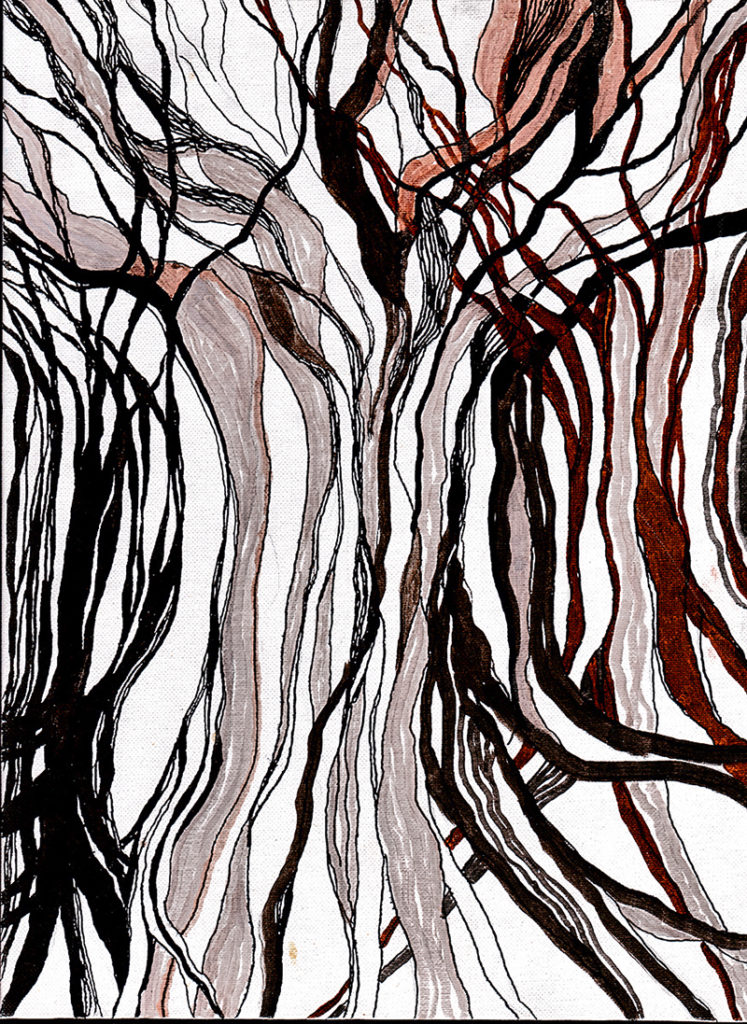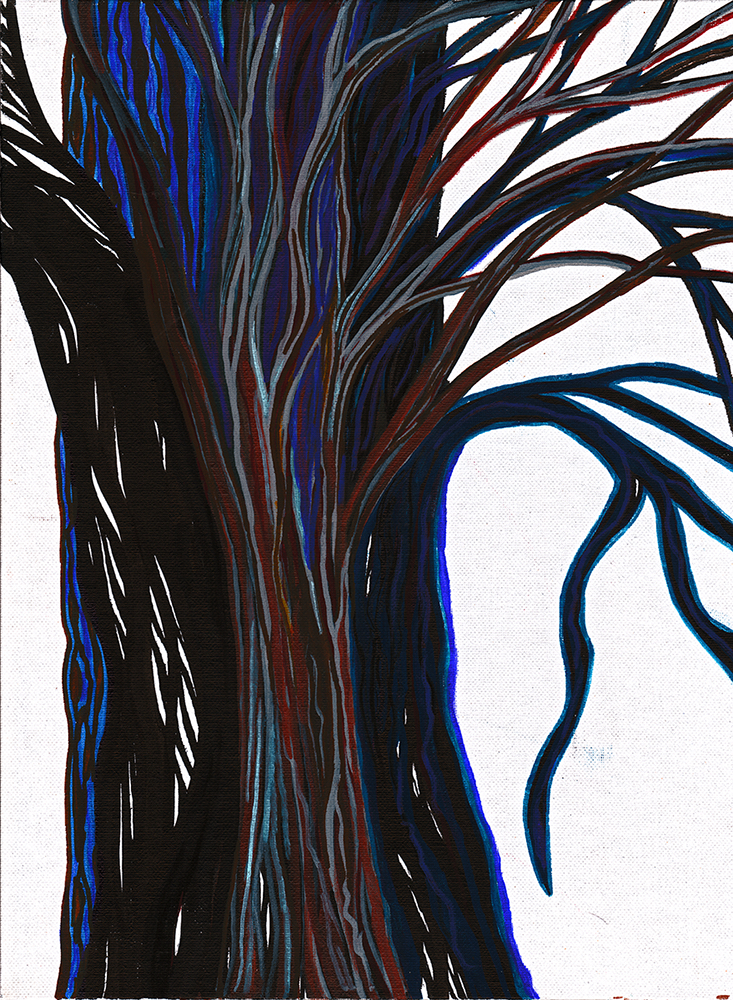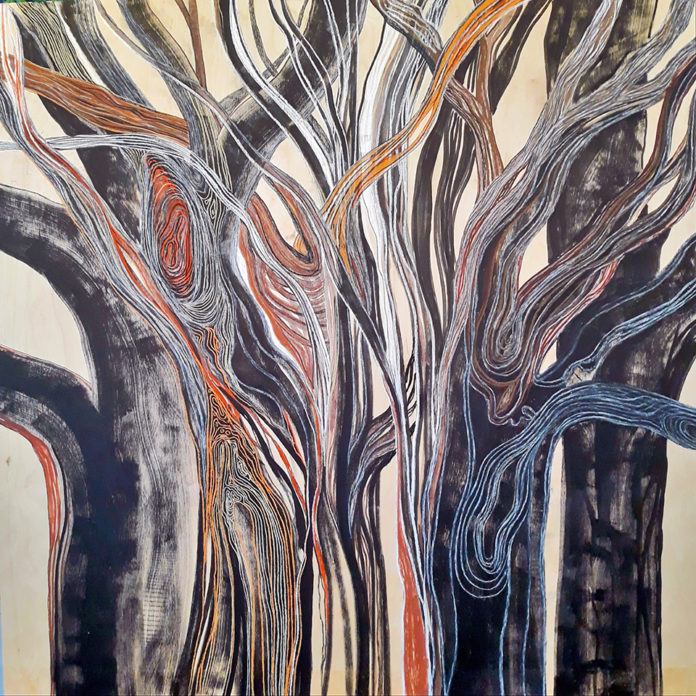By Lorien Suárez-Kanerva

New Artwork Series “Wooded Terrain”
Artist/Palm Desert, California
Over the last couple of months, I became creatively captivated by trees. I studied photographs, videos, and books, especially about trees’ anatomy and their fractal patterns. While doing this research, I created studies of a variety of trees.

Suzanne Simard in her TED Talk “How Trees Talk to Each Other?” addressed something that I had somehow sensed about trees. I appreciate and respect trees with their extensive lifespans reaching well beyond ours. Discovering that forests and old trees have an extensive repository of Wisdom and a root network through which they share resources and information was awe-inspiring.
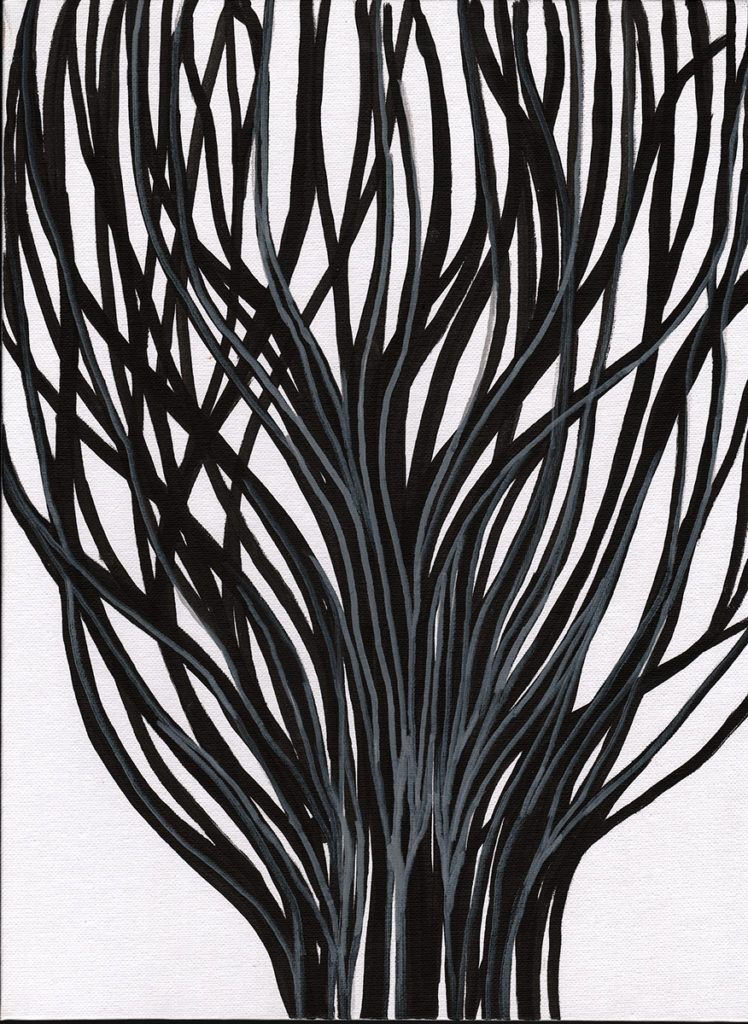
In his work, “Earth and Reveries of Will,” Gaston Bachelard makes observations from a phenomenologist’s perspective that address trees’ significance at a symbolic level. “To understand its role adequately, one must, at least once in one’s life, have loved a majestic tree and been moved by its counsel of solidity.”
To expand on this symbolic meaning of trees, Bachelard reflects on Virginia Woolf’s description of an Oak tree in her writing, “Orland: A Biography.”

The dreamer moors his irresolute heart to the heart of the tree,…suddenly the dreamer who experiences the intimate hardness of the tree understands that the tree is not hard for nothing,…it gives to human beings a towering image of legitimate pride…and returns us to the peaceful condition of solidity. Gaston Bachelard, “Earth and Reveries of Will,” Chapter 3: Metaphors on Hardness and Solidity
Bachelard elaborates on the qualities that the tree represents.
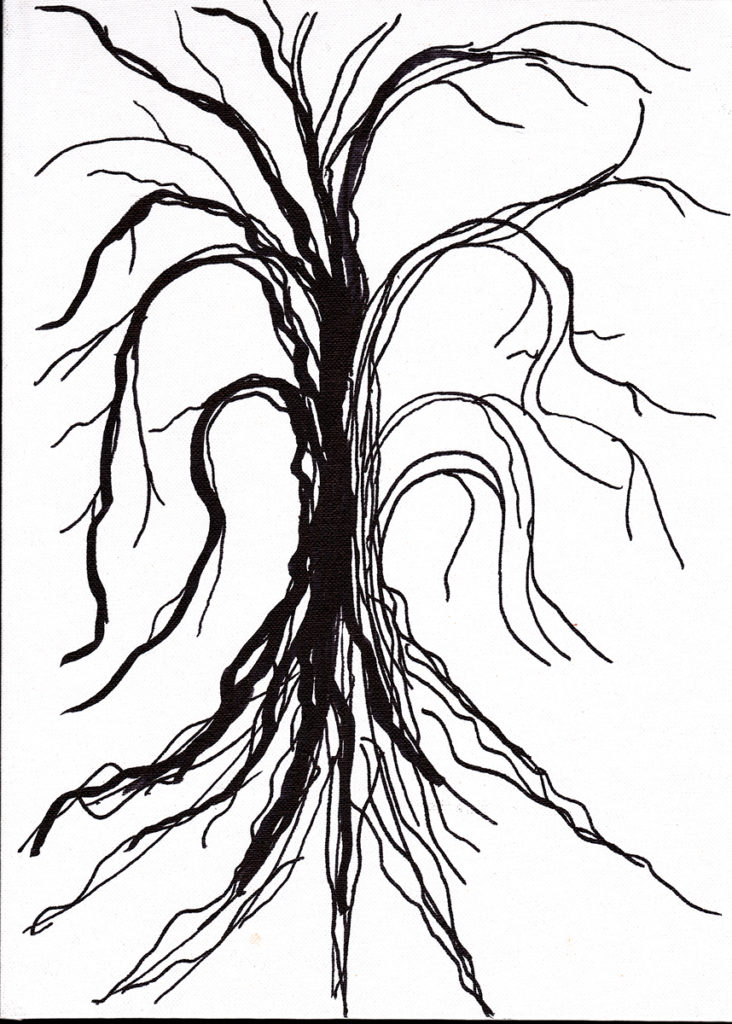
One who experiences images in all their original force knows well that no image appears by chance, that every image that has been restored to its psychic reality has deep roots. Ibid.
Alongside trees, landscapes don’t just exist to be contemplated; they have a dynamic character. “A landscape is a state of mind…gauging its forces and resistances.” Ibid. I use the term terrain to connect the title and this series with this expanded consideration of the terrain as a landscape with symbolic value.
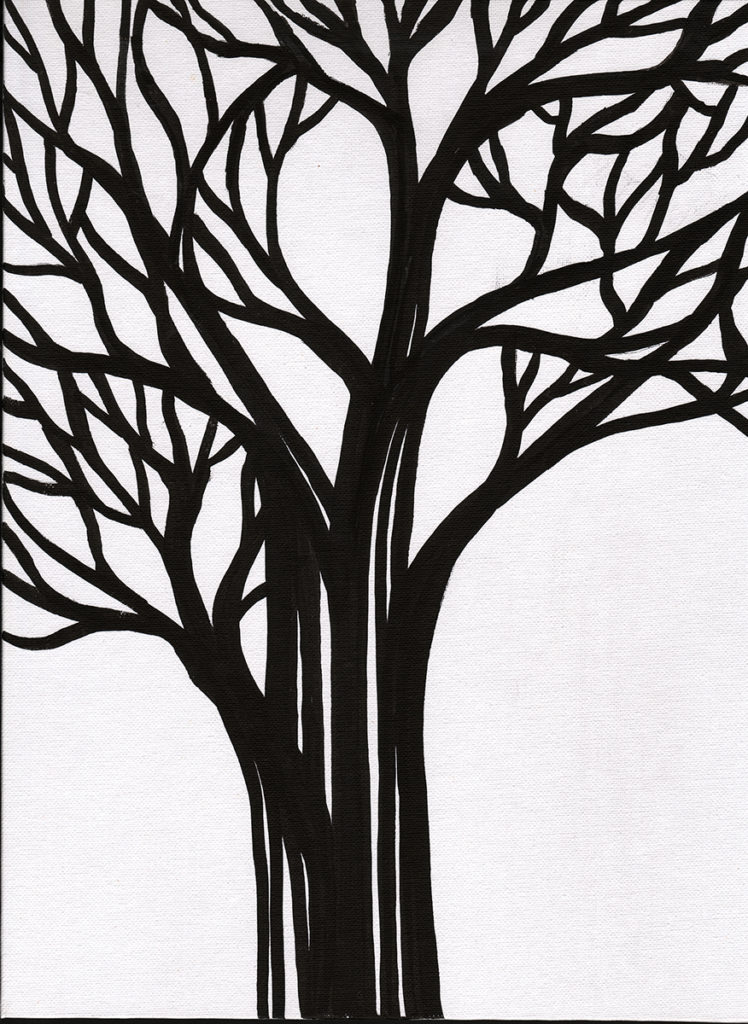
The dynamic character of landscapes rests with how these respond to forces and resistances. I find this reflection of interest to me as an artist since it connects with the beauty that I perceive from weathering. As landscapes and living forms adapt to the action of forces on them from their environment, the particular form of response they present creates a variation and transformation that’s unique to the circumstances of the specific hardship experienced.
Bachelard expands this analysis of the adaptation process by introducing the added matter of the will. The will becomes activated to meet the challenges presented by the environment.
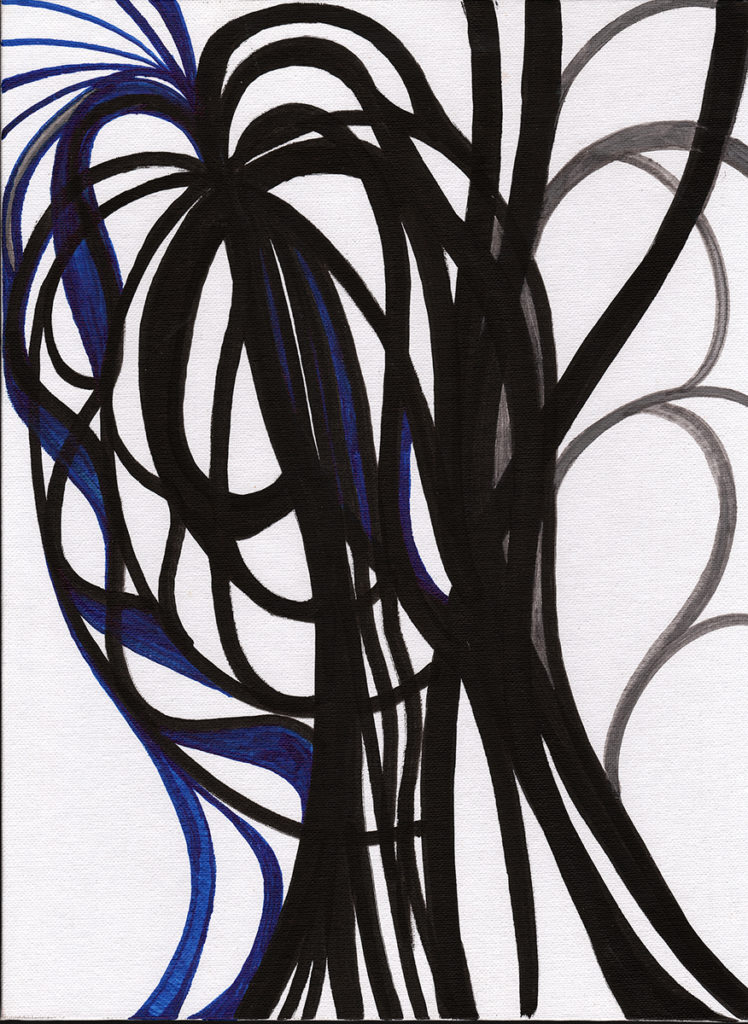
The resistant world lifts us out of our static reality, beyond ourselves, initiating us into the mysteries of energy. Henceforth we are awakened beings. Hammer or trowel in hand, we no longer stand alone – we have an adversary, something to accomplish. However insignificant it may be, we have, as a result of this, a cosmic destiny. Chapter 1: The Dialectics of Imaginary Energies

Here, I would venture to suggest that trees are, just as much as human beings, also exerting a will to adapt to adversity. In essence, trees are also “in handling diverse and quite distinctive types of matter, [developing their] own individual patterns of flexibility and resolution. Not only do [they] become adept at the crafting of forms, [trees] become materially skillful at balancing [their] strength against the resistance of matter…the [tree] at work elevates the subject to a higher plane, to an enhanced or dynamized level of existence.” Ibid.
Currently, I have begun two new artworks in the series Wooded Terrain #2 focusing on Joshua Trees and Wooded Terrain #3 focused on the Tasmanian Snow Gum Tree. This is an ongoing project to share in the near future.
